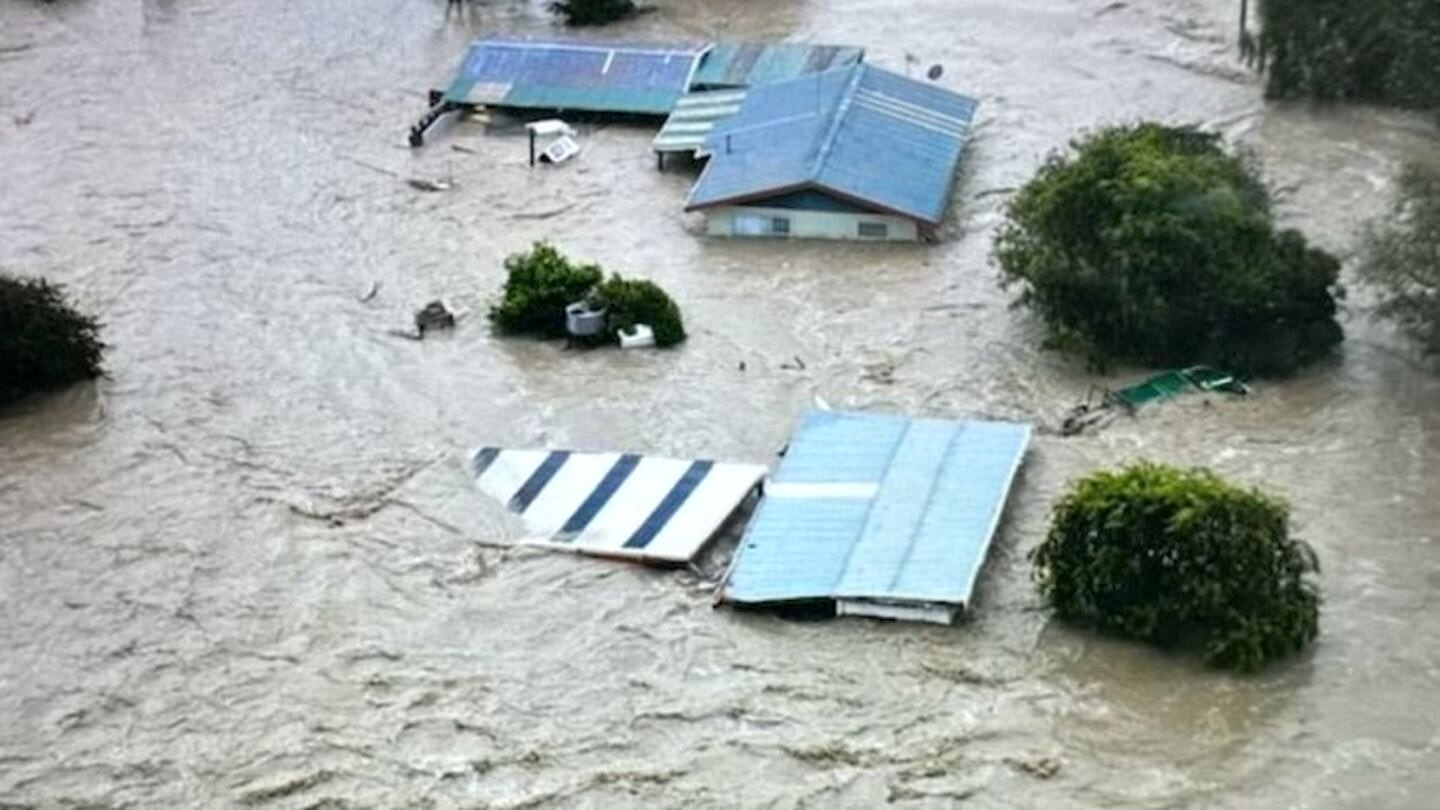Thursday marked a quiet step change in how the Government responds to natural disasters, with buyouts of damaged properties no longer a guarantee, said Climate Change Minister Simon Watts.
While that is not the impression one might get from reading the Government’s four-page National Adaptation Framework, a closer perusal of the paper Watts took to Cabinet on climate adaptation makes clear the era of buyouts is now over.
“In the near term, the Government must begin to reset expectations of its role in providing financial assistance where homeowners suffer significant losses after a major event,” he wrote in the paper.
Speaking to Newsroom, Watts said there had long been an assumption that the Government would step in to provide homeowners with the market value of their properties after disasters, but that this was not fiscally sustainable in the long term. A new approach is still being worked on and details won’t be finalised until the next term of Parliament, but in the interim, the Government is planning to adopt a different tack for the next extreme event.
“It’s definitely a signal that the way in which governments have responded in the past is unlikely to be a financially sustainable mechanism as we move into the future, which is going to see more frequent and severe weather events – and, in addition, how the market is responding with risk-based pricing flowing through to insurance as well,” he said.
“We’re in that transition and the assumption that government will always step in to cover that cost is no longer an assumption that can be made. That’s pretty fundamental, actually, because to date it’s always been that case.”
Over the next seven months, officials will work out what a transition away from full government assistance could look like over the next decade or two. Watts plans to take another paper to Cabinet in May, but noted that decisions will have to wait until after next year’s election.
In the meantime, there is almost certain to be another extreme weather event. Watts referred to the catastrophic flooding in Tasman in July in his paper, authored in September, but even since then there has been more disaster with flooding in the Waikato this week.
“The proof in the pudding will be how we, in reality, respond to the next event and start to embed some of that rationale and logic and thinking to the way in which government responds,” he said. How the Government responds to the next extreme event will look different than it might have a couple of years ago, he confirmed.
That echoes what Watts told Cabinet: “The strongest signal we will send is any decisions relating to financial assistance if the next major event occurs before formal policy is in place.”
This doesn’t necessarily mean the tap has turned off immediately – “I don’t think it’s straight to zero in the next event” Watts said – but decisions around assistance will now be made under a different set of assumptions.
The paper lays those out.
“Where central government is considering requests for assistance: Central government’s support for local government recovery planning primarily covers infrastructure rebuilding and resilience. In some instances, property-level resilience measures (including buyouts) may be a part of area-wide resilience measures, where that is the most cost-effective option,” Watts wrote.
“Central government’s objective is not to fully cover losses suffered, but to mitigate genuine hardship. Homeowners should not expect to receive financial assistance for property-level resilience measures based on a full pre-event property valuation.”
Once there is a clear timeline for transition in place, New Zealand can move towards Watts’ longer-term aim. That’s described in the Cabinet paper as “a state where the Crown no longer distorts risk signals and blunts incentives to manage risk by providing significant financial assistance (especially in the form of residential property buyouts) after major events”.
In the interim, Watts noted in the paper, “the Crown retains full discretion as to whether or not it provides financial assistance”.
Rebecca Styles, Consumer NZ’s investigations team leader, said the policy work undertaken over the coming year would be critical for homeowners’ understanding of their financial exposure to climate risks.
“It looks like there could be some buyouts for getting rid of homes that are in the direct firing line, so if it’s part of a community adaptation plan it looks like there may be some financial assistance there, but after an event, it seems like it will be off the table. It will cut back to the insurers,” she said.
That’s problematic if an event damages land (which is not insured) but not a property.
“Your house is not damaged, but the land is unstable, and the council says you can’t live in it. Then what’s happening? How are people surviving? If that happens, where are they going to live? There’s a lot of detail and nuance to come, but from this I think it’s a clear signal that buyouts will be off the table,” Styles said.
“It’s a big shift; it will be pivotal about how they are communicating it to people. The sooner, the better. The sooner that we have a concrete plan and people know where they are, the better. And I appreciate it’s going to take a while, but all the while, people’s insurance bills will be going up and rates are going up and councils will be trying to put up adaptation plans.”
Watts too emphasised that it was a turning point.
“For the first time, actually, a government has made a decision and an agreement around what is quite a fundamental, strategic way in which it will operate … Governments of many stripes have deferred discussion around this because it’s difficult,” he said.
“I think we’ve faced up to that and we’ve taken a step forward. It’s not the whole process, obviously, but we’re moving forward on that and we’ll continue to do that between now and May as well.”

